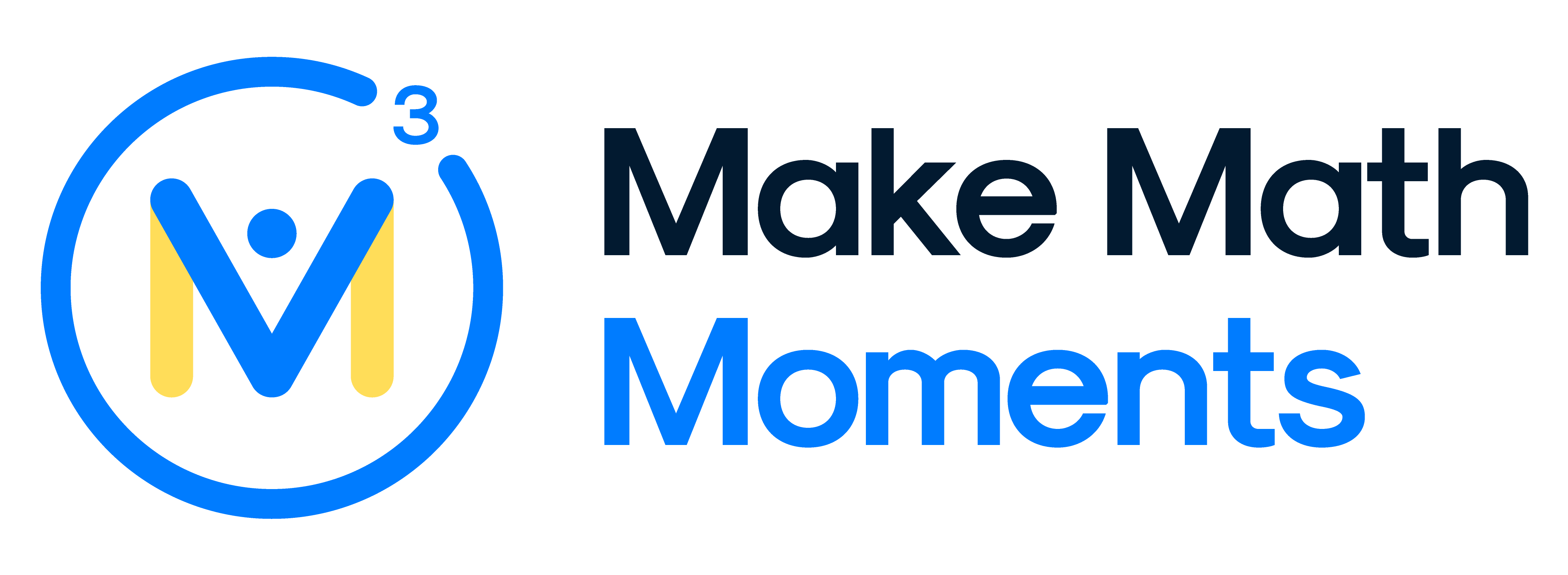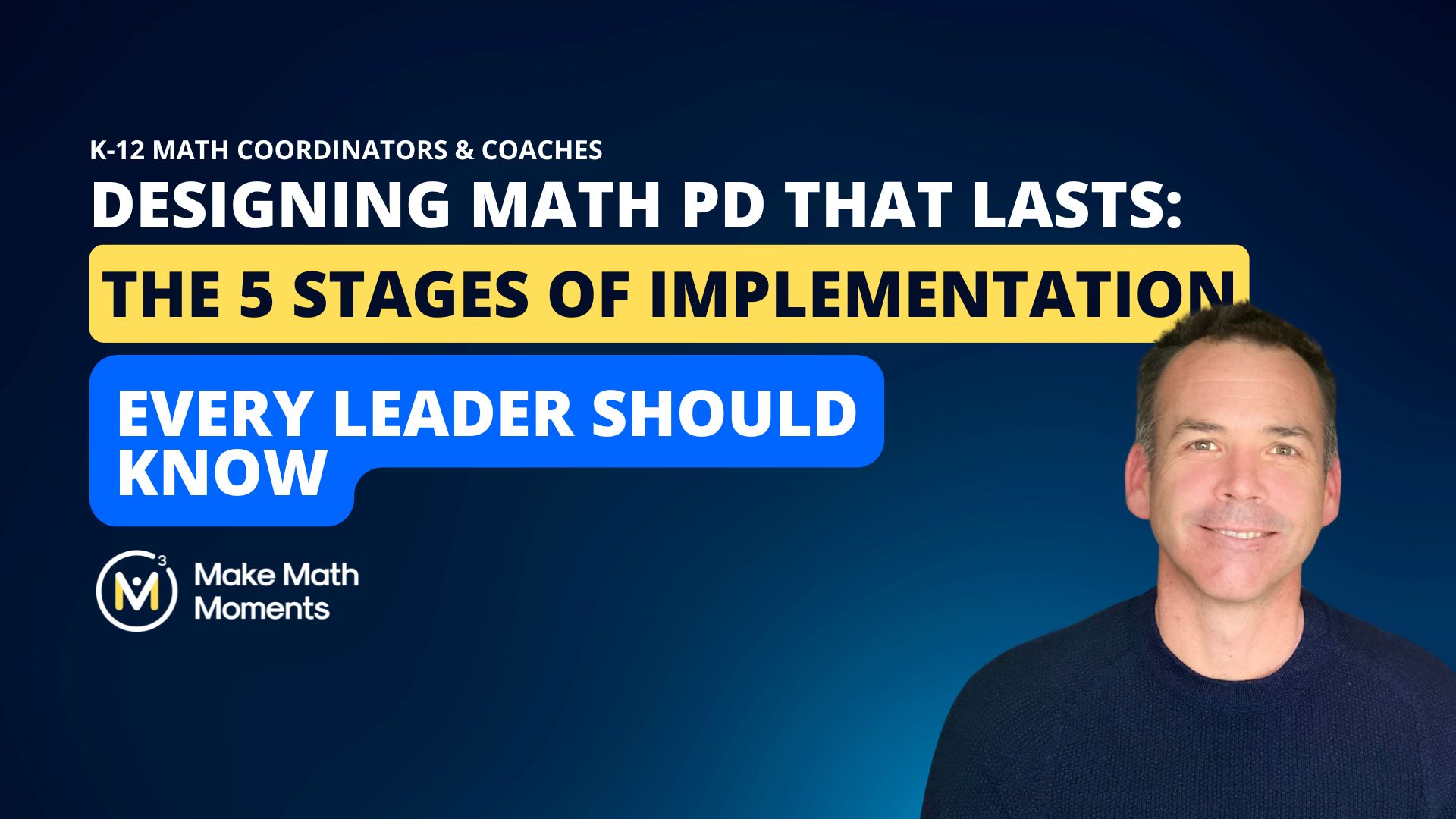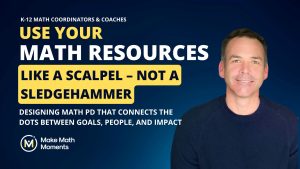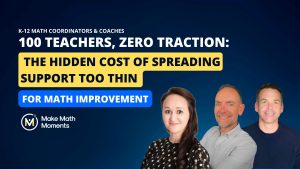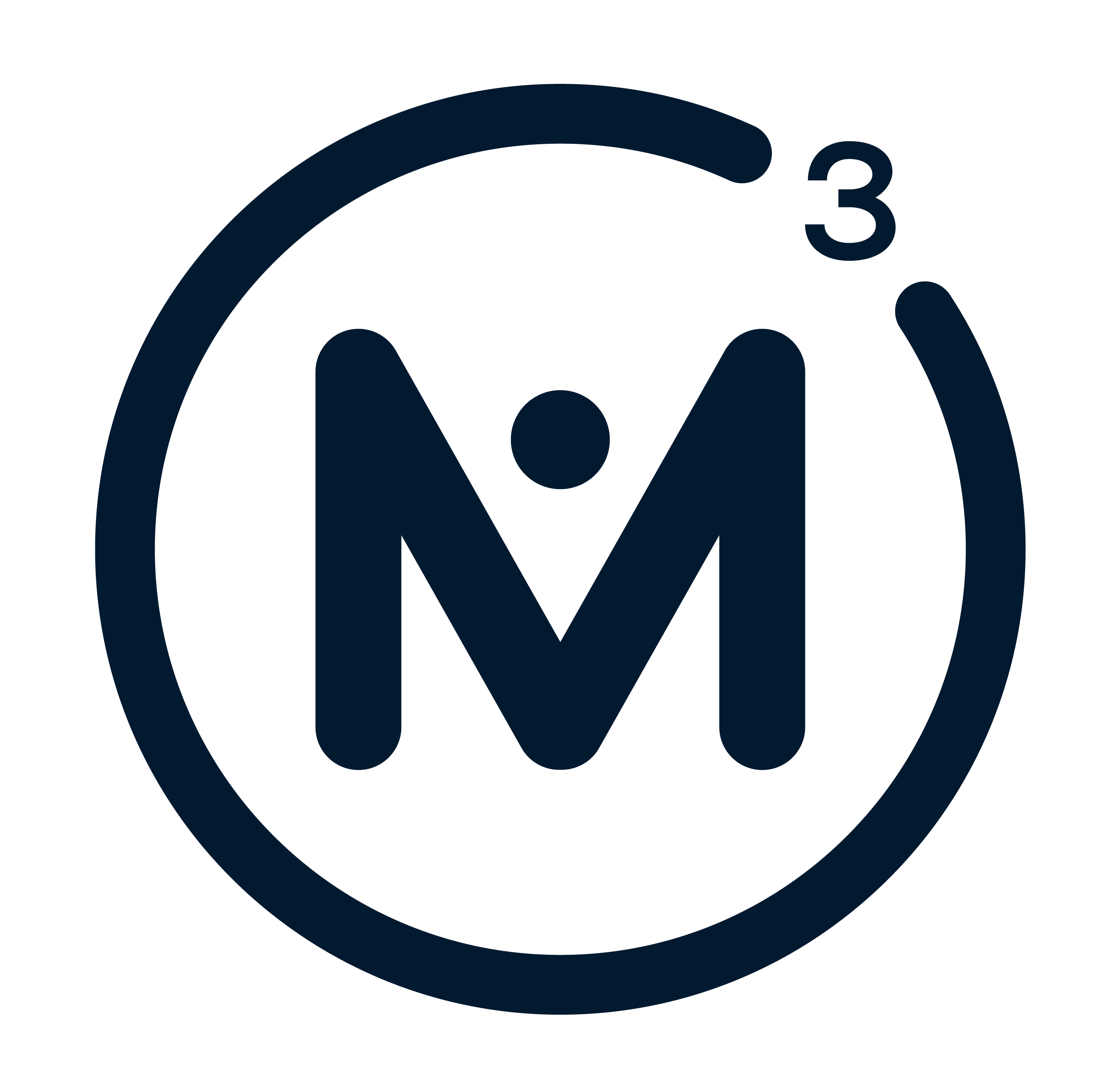Moving From Talk to Action in Professional Learning: How math leaders can turn awareness into lasting instructional change
You’ve probably lived this scene before.
Your district launches a promising new professional learning initiative.
The kickoff session goes beautifully — teachers are nodding, engaged, and even excited.
You leave thinking, “This time it’s going to stick.”
Then a few weeks later, you walk into classrooms and realize… nothing much has changed.
It’s not that teachers didn’t care or weren’t listening. It’s that the energy of that initial PD day faded — swallowed up by the urgency of daily teaching life.
So why does professional learning so often end in talk rather than action?
And what can we, as leaders, do differently to turn good ideas into lasting practice?
When Resistance Isn’t the Problem
Educational researcher Jim Knight offers a humbling reminder:
“If a large number of people are resisting, it’s probably not the people — it’s the system or the change agents.”
In other words, resistance often reveals a system design problem, not a mindset problem.
Teachers rarely resist because they don’t care about students. More often, they resist because:
- The system has a poor track record of follow-through.
- They’ve seen too many top-down initiatives that quietly disappear.
- They weren’t given voice or agency in shaping the work.
- The innovation doesn’t align with their beliefs or identity as teachers.
- Perfectionism or fear of failure makes vulnerability risky.
When change feels unsafe or inconsistent, even the most dedicated teachers will hesitate. The goal, then, isn’t to “fix” teachers — it’s to redesign how we support change.
The Five Stages of Implementation
Knight describes a progression educators move through as they adopt new practices. Understanding these stages helps leaders diagnose where their staff are and what kind of support they actually need.
1. Non-Use
The innovation simply isn’t being used — either because teachers don’t know about it or they’re intentionally avoiding it. Avoidance often comes from misalignment with personal beliefs or a lack of evidence that the change helps students.
2. Awareness
Teachers know about the idea and may even be intrigued, but awareness rarely lasts without support. Research shows most of what’s learned in a workshop is forgotten within three days. A one-off PD day can spark curiosity but seldom leads to changed behavior.
3. Mechanical
Teachers start trying the new approach, but it’s clunky and effortful. Lessons feel awkward. Results are uncertain. Without coaching and encouragement, many abandon the change here.
This is where most initiatives die — not because the idea was bad, but because the messy middle wasn’t supported.
4. Routine
The practice becomes part of regular teaching. That’s progress, but there’s a danger of false clarity: teachers believe they’ve mastered the practice while missing its deeper purpose. Routine can harden into rigidity — “this is just how we do it” — and growth stops.
5. Proficient
Proficiency emerges when teachers internalize the intent behind the innovation and flexibly adapt it to meet student needs. They understand both the “what” and the “why,” allowing them to personalize and refine their practice over time.
From Framework to Field: Seeing the Stages in Action
Understanding these five stages conceptually is powerful — but seeing them unfold in a real school context makes them tangible.
Every district has educators spread across these stages at once. Some aren’t yet using the new approach, others are trying but struggling, and a few have begun to refine it with confidence.
The key for leaders is recognizing where people are and responding with the right kind of support.
The following example shows how one school used this understanding to turn resistance into collaboration and growth.
A Case Study: Turning Resistance Into Reframing
At one middle school, a principal and a math lead were wrestling with years of stagnant student results. A small group of teachers had begun experimenting with their assessment practices — reworking scope and sequence, embedding depth-of-knowledge questions, and asking students to justify and reason more regularly in their written work.
The results were striking.
By midyear, 90% of students — including many who had struggled previously — met benchmark expectations.
Encouraged by this success, the leadership team wanted to expand these practices across other classrooms. But when they shared their plan, they hit a wall of resistance.
Some teachers said, “The district is doing a curriculum review next year — why change now?” Others admitted, “What I’m doing works for me. Why take on something new I might not be good at?”
Instead of mandating compliance, the leaders reframed the conversation.
At their next department meeting, they didn’t open with the new assessment strategy at all.
They opened with student data.
They showed how these changes had helped a group of historically marginalized students thrive — and asked,
“How can we make sure all our students experience this kind of growth?”
The tone shifted instantly.
Teachers began discussing what was possible, not what was being required.
The conversation moved from “Do what this teacher is doing” to “What outcomes do we want for students, and how might we get there together?”
By centering student impact instead of teacher compliance, the leadership team reduced defensiveness and built shared ownership for change.
This is how talk turns into action — by focusing on purpose, not procedure.
From One School’s Shift to a Systemwide Lesson
This story isn’t just about a single middle school — it’s a snapshot of a much larger pattern.
When educators resist, it often signals that they’re caught between the awareness and mechanical stages of implementation. They’ve heard the idea, maybe even believe in it, but they haven’t yet experienced enough support to move beyond early discomfort.
In this case, the leadership team succeeded because they did exactly what strong systems do at that moment: they provided clarity of purpose, emotional safety, and follow-through.
They didn’t demand immediate proficiency — they created conditions for it.
Why So Many Districts Stall Between Awareness and Mechanical
Professional learning often stops at awareness because that’s where the system stops supporting it. Teachers attend a workshop, maybe try something once or twice, and then revert to familiar routines.
In contrast, systems that help teachers through the mechanical stage — by providing coaching, peer collaboration, and safe spaces for experimentation — are the ones that see lasting change.
It’s here that leaders play the most critical role: keeping momentum alive when enthusiasm fades and perfectionism sets in.
What Schools Can Do Differently
The most effective districts don’t “push” implementation — they design for it. That means creating structures that make new learning visible, supported, and meaningful.
1. Focus on Students, Not Strategies
Teachers are far more likely to commit when they see how a practice improves student outcomes. Anchor every conversation in the difference it makes for kids.
2. Create Low-Risk Conditions for Trying
Trying something new requires vulnerability. Leaders can reduce risk by offering coaching, modeling, and peer visits that emphasize progress over perfection. Normalize the clunky, awkward stage as part of learning, not a sign of failure.
3. Empower Teacher Voice
Change done with teachers always outperforms change done to them. Invite educators to help define the problem and co-design the path forward. Ask, “What do we want for our students, and how might we get there together?”
4. Set Student-Centered Goals
Avoid framing goals around actions (“implement number talks”) and instead define them by outcomes (“increase the number of students who reason flexibly with numbers”). The method can evolve — the focus on learning remains constant.
5. Normalize the Messiness
Implementation isn’t linear. Progress will look uneven across classrooms and teachers. Expect it, name it, and build time for reflection and adjustment.
From Initiative Fatigue to a Culture of Follow-Through
When a system supports teachers through these five stages — especially the challenging mechanical phase — professional learning stops being a series of disconnected events and becomes a culture of continual improvement.
That shift requires patience and persistence. It means moving slower at the start so growth can sustain over time. And it requires a mindset change for leaders too: from “rolling out programs” to engineering conditions for growth.
When schools move from talk to action, professional learning stops being something that happens to teachers and becomes something that happens through them — visible in classrooms, measurable in student thinking, and lasting well beyond the next initiative cycle.
Key takeaway:
Resistance isn’t a roadblock — it’s a mirror.
When systems create clarity, safety, and follow-through, even the most hesitant teachers can move from awareness to proficiency.
For Leaders Facing the Same Challenge
If your professional learning feels like it starts strong but loses traction over time, you’re not alone. Many districts see early enthusiasm fade when systems for follow-through aren’t in place.
The good news?
You can build a culture where growth sticks.
If you’re ready to move your district from talk to action—and help every teacher move confidently from awareness to proficiency—we’re here to help.
👉 Explore our District Support Programs to build sustainable systems for math improvement. Explore our support programs.
